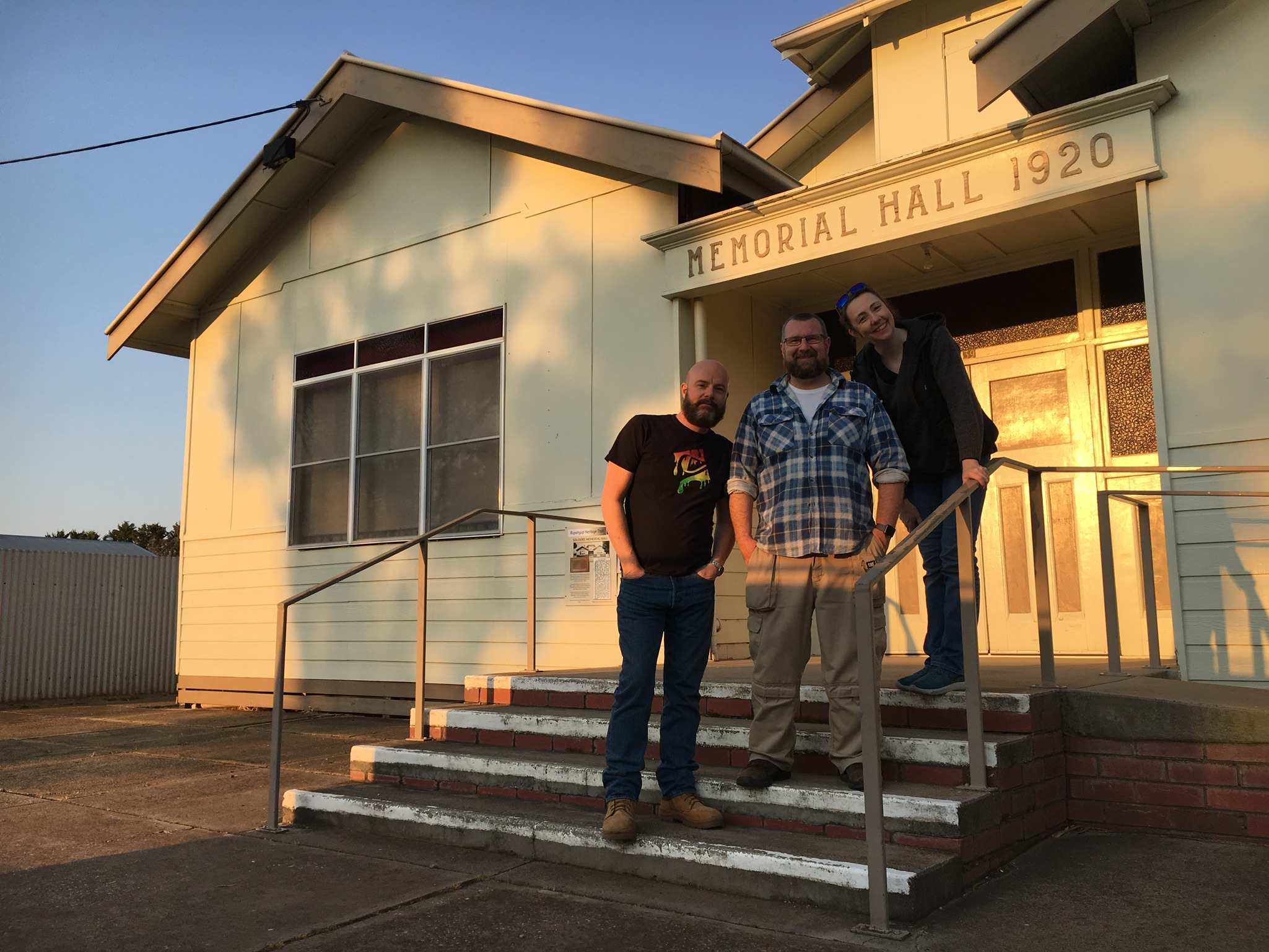It’s not always about the movies
Day two of our country Victoria tour highlighted a couple of things for me.
One; that the hundreds of forgotten country halls dotted throughout Australia have unexpectantly become a haven for over a century of electro mechanical projection history. Two; the many and varied reasons behind why these installations survive.
Six years ago I witnessed first hand the industry imperative that demanded exhibitors remove film equipment and retool for the future. At the time the unceremonious 'trashing' of projectors broke my heart and in part launched me on the journey of making this film. But here in these forgotten country halls, showing movies was only one of their communal functions and so old projection booths were out of the way, inaccessible and largely forgotten about.
Being from a small country town myself, I remember fondly many of the events I attended as a boy at our local Mechanics Institute Hall like the C.F.A fundraising dances. While my parents foxtrotted to a three piece saxaphone combo I’d sneak butterfly cakes with my friends from the tea room. These memories all came flooding back as I entered this similar community hall somewhere in the Wimmera region of western Victoria. But nothing quite prepared me for what I found at the top of a steep accent to the projection booth.
A bio box lined completely in tin sheeting has laid untouched for decades. Spider webs, thick with dust embrace every artefact in the room. I almost get the feeling that the space was hastily abandoned; everything left exactly where it was last used.
In the corner sits dual record players, one with a Tommy Dorsey L.P still on the platter. The other, a 78 equipped with cane needle is over shadowed by a towering Western Electric valve rack amplifier. Distributors’ memos to the projectionist hang ‘alligator clipped’ to the wall dating as far back as 1951.
A pair of Simplex carbon arc projectors with adjustable aspect lenses are complimented by a slide projector still loaded with glass slides promoting local businesses.
It's a time capsule and I feel like Howard Carter stepping into that celebrated Pharaoh’s tomb.
This leads us to the second point; the reason why this room has stayed this way. Peter Teasdale and Ron Schneider are not projectionists and neither of them sought a career in the box. One served as an assistant to the projectionist during the last days of movies here and the other is the son of the same. Both men spent many hours listening to the clatter of sprockets against celluloid and remember the distinctive smell carbon arc rods produce but neither have any plans to remove or restore the equipment. So the projectors lay silent. Both men treasure fondly and proudly their connection to the movies played here but not necessarily for a love of cinema, not even for an appreciation of the technology but simply for a deep connection to family, community and their past.
My thanks to both men for sharing their heart felt memories on camera and as always to my amazing Cinematographer, Joanne Donahoe-Beckwith and Location Coordinator Paul Copeland.







